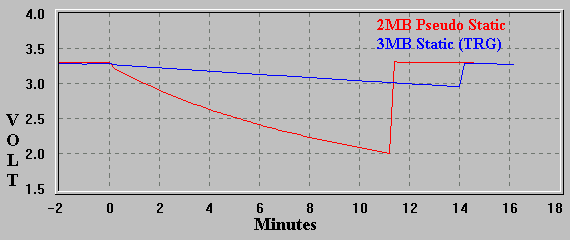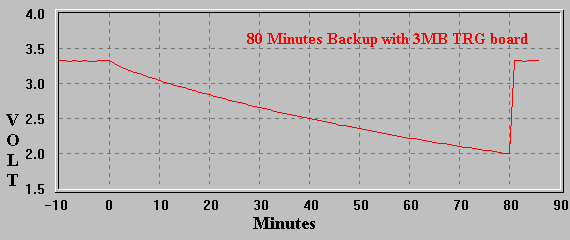| . |
| . |
| . |
| Power for the Palm |
|
. Before you read the following, I want you to remind, that all my tests were done with the newer PalmPilots. As I mentioned already on my serial port page, it looks like 3COM/USR changed the chip supplier for the the serial driver as well as the power supply converter. I refer to PalmPilots with the Linear Technology step-up converter LT1304. I've never checked the old Palms, but they seem to work with MAXIM IC's. Maybe they got kicked because of their bad quality data sheets :-) . |
| . |
| . |
| . |
|
. Rechargeables . The power supply concept of the Palm was a very pleasant surprise for me. The use of a step-up voltage converter that operates down to below 1.5V not only guarantees the full 'exploit' of normal batteries, but also makes it possible to use rechargeables with a usual lower cell voltage. And the converter makes full use of the charge, what's important to prevent the well known memory effect of older NiCads (as long as you don't use a special and more expensive charger, that discharges the cells before charging them). Anyway, I use only rechargeables and I'm very happy with it. The type I use are the much better NiMHs and they are produced by Panasonic. Their nominal capacity is 500mAh, but I even get ~550mAh with a good charger. This is about 60% of good alkalines, or around 20 hrs of mixed operation time. I have two sets, swapping them about every week. Especially with the PalmPilot, it's a *real* good feeling to use the backlight as long as I want, without that strange feeling, that I have to pay for every minute (don't you know it???). The NiMHs here in Germany are about 4 times the price of a Duracell alkalines. But with a good (controlled) charger, you get easily 500-1000 charges, so it's really *cheap*! I've heard that these cells are hard to find in the States, but I don't believe that they are not sold over there. Panasonic is a major player in the rechargeable market, they should be available nearly everywhere. For Germans: CONRAD ELECTRONIC lists some suitable types. Check for example order # 250108-62 or # 250028-62. IMHO, NiCads are really not very good for the Palm. First, they have only ~250mAh which is indeed a bit less and second - more important - NiCads have a much 'harder' voltage characteristic than NiMHs. Due to the higher impedance of NiMHs (more like 'normal' batteries, what makes them bad for high current applications), the end towards 2V (with 2 cells) is slower and more predictable than with NiCads. With the NiMHs I use, I get a low voltage warning at least 1 or 2 hours before they really shut down (but then without backlight!). With NiCads that time might be very short, I've never tried it. I've never tried renewables, I think they are not as good as NiMH. Hard to maintain, mostly more expensive (in respect to their lifetime) and most important, you don't need them in the Palm. Renewables were invented as a rechargeable alternative for devices that need the 1.5V /cell. Most annoying the fact, that you need to take care not to 'over-discharge' (or is it called 'under-discharge'?) them. . |

. |
| On 0 minutes I took the batteries out, before that time you can see
the cap beeing charged to constant 3.3V. After that you can see the reduction
of the voltage, depending on the current the system needs. The 2MB pseudo
static RAM reaches its safe point after about 11 minutes and I put back
the battery. You can see the cap beeing charged immediately again. Using
the same time scale, the TRG true static RAM used much lesser current,
leaving the cap charged to ~3V after 14 minutes! Just for fun, I recorded
also the TRG board until it reached the 2V, and it gave me 80 minutes of
backup time!
. |

. |
| Needless to say, that both Palms showed *no* data loss. I would say
that with a 'healthy' unit, you get a multiple of one minute time to change
batteries. Interesting the TRG board: With 3MB the most RAM and you still
would have time to *buy* the batteries *after* you took them out :). Interesting
also, that the real time clock in the DragonBall (after all a 'dynamic'
device) influences the consumption much lesser than the type of RAM.
A final word on data loss: My speculation is, that a spike on the power supply of the Palm is more likely the reason for a data loss when changing batteries than a low voltage situation (unless there is a real defect) So IMO, changing the batteries one-by-one is not a good idea, as you have two times the critical situation of breaking supply and making 'first contact' again (no, your Palm is not assimilated ...). Maybe the worst is, when you've a 'shaky' hand when inserting the last battery (no joke!). . |
|
. Last updated: March 23rd, 2000 Copyright © 1997-2000 by Peter Strobel, all rights reserved. |